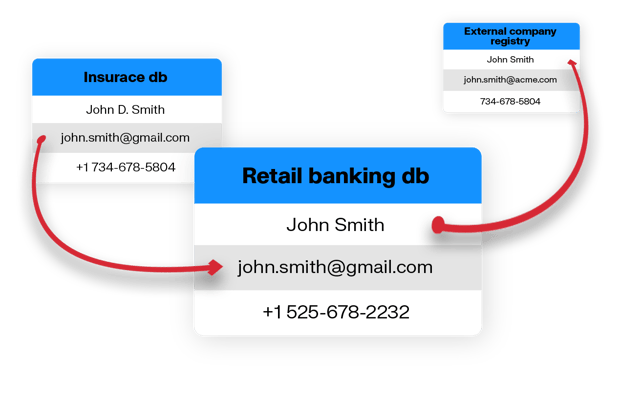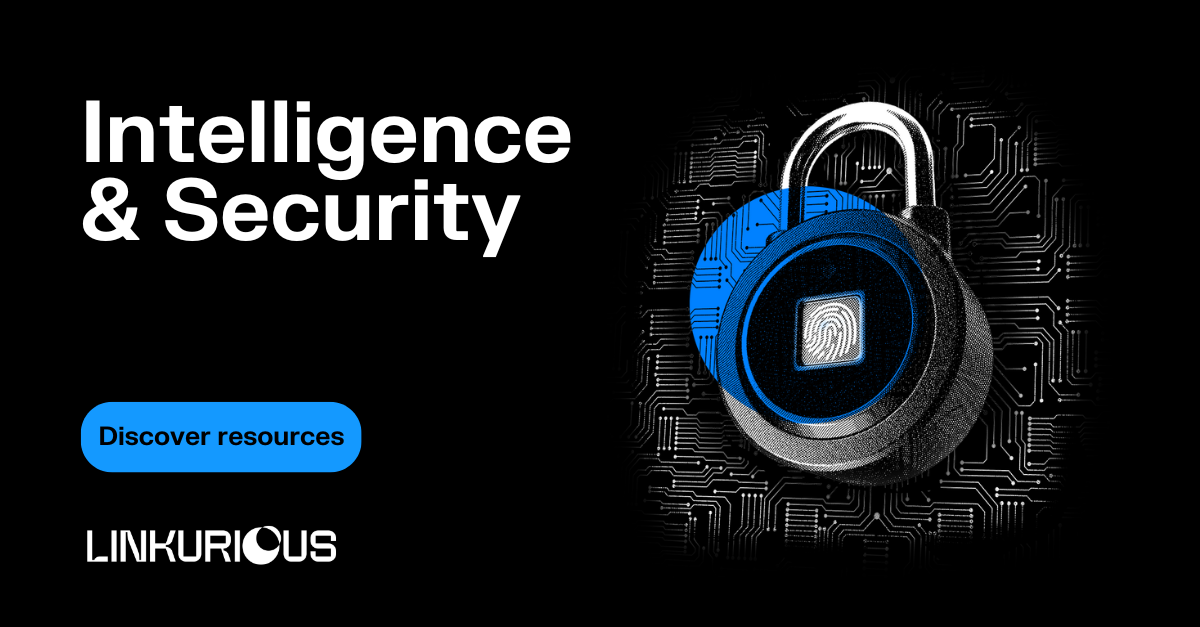Sometimes the clues you need to get to the bottom of your investigation are right under your nose.
Open source intelligence, or OSINT for short, has opened up a world of possibilities for investigators. This information gathered from publicly available sources is like a not-so-secret weapon, since anyone can use it. From law enforcement to intelligence to cybersecurity, OSINT tools available to anyone with an internet connection have completely changed the way you can conduct an investigation.
This article introduces you to over 20 useful OSINT tools that can enhance your investigations and find the information you need. We’ll also show you how to make sense of all this information and steer clear of the headaches and errors that can come with juggling multiple data sources.
Open source intelligence (OSINT) refers to the collection and analysis of information from publicly available sources. Think of it as piecing together a puzzle using bits of data and information that anyone can access - no classified documents or secret informants needed. If you know where to look, there are troves of information about individuals and organizations that resourceful investigators can turn into investigative assets.
OSINT includes a broad range of information sources, including:
- Traditional media: Newspapers, magazines, radio, TV broadcasts, etc.
- Social media platforms: Facebook, LinkedIn, Instagram, TikTok, and others
- Public government records: Court documents, property records, business registrations
- Academic publications: Research papers, conference proceedings, journals
- Websites and blogs, both personal and professional
- Online forums and discussion boards
- Publicly available databases: Everything from phone directories to specialized industry databases
- Geospatial information: Maps, satellite imagery, and location data
There is a wide variety of tools available to tap into these many open sources, helping investigators harness the enormous quantities of data that may be relevant to their cases. Many OSINT tools help search for, collect, or analyze information more efficiently through social media analytics, web scraping, geospatial intelligence, etc. These tools can vary in quality. We’ll look at some of the best ones in a moment.
Why does OSINT matter in such a big way? Its applications are practically endless, bringing real value to many security and intelligence operations - and beyond. Below are some of the ways OSINT can be applied across use cases.
- Law enforcement uses it to track criminal activities and gather evidence
- Businesses tap into it for competitive intelligence and market research
- Cybersecurity pros use it to identify potential threats and vulnerabilities
- Journalists rely on it for investigative reporting and fact-checking
- NGOs and humanitarian organizations use it to monitor human rights issues and crisis situations
The beauty of OSINT lies in its accessibility and the wealth of information it can provide. With the right tools and techniques, you can uncover valuable insights that might otherwise remain hidden in plain sight.
There are endless OSINT tools out there today, readily available in a couple of clicks. There are free OSINT tools, while others require a subscription. New ones are constantly emerging, as old ones are updated - or close down.
The “best” OSINT resources will really depend on your use case and what kind of information you need. With that in mind, we’ve put together a starter list of some of the most useful tools out there to gain access to a broad range of open source intelligence.
- OSINT Framework
OSINT Framework is a good place for investigators, researchers, journalists, etc. to get started. This OSINT tool aggregates many different resources and helpfully organizes them by type and source, making it easy to find the type of information you need. OSINT Framework is maintained by a community of users and is GDPR compliant.
- Social Links
Social Links is an OSINT vendor that assembles large amounts of data coming from many open sources including social media, messaging apps, blockchains, the Dark Web, and more. It offers a great deal of data in one place.
- Shadow Dragon
Shadow Dragon is another vendor that offers several investigative tools, including data from over 225 open data sources. Their database is updated regularly with live data.
- Google Maps
OSINT tools don’t always have to be sophisticated or specialized. Plenty of useful information is available through widely used tools like Google Maps. Quickly look up what kind of business or residence is at a given address, get the street view, etc.
- Satellites Pro
Get up to date satellite imagery from all across the globe. Satellites Pro aggregates satellite imagery from several different sources.
A free reverse phone lookup tool to get information on a phone number.
- Hunter
Hunter is an email lookup tool that lets you verify information about an email address. You can also search emails by company or by name.
- That’s Them
Showing up on our list again, That’s Them also offers a reverse email lookup. Enter an email and find out who is behind it.
- BuiltWith
BuiltWith is an OSINT tool that lets you understand the technology behind websites including server frameworks, analytics, and CMS. It’s a useful tool for competitive intelligence and technology strategy development.
This tool lets you look up domain names, websites, and IP addresses.
- View DNS Info
This resource lets you look up not only DNS information, but all kinds of things related to websites and connectivity: IP history, IP location, domain ownership, firewall tests, and more.
- IP-API
As the name suggests, IP-API is an API that lets you look up IP address information, notably geolocation.
- Shodan
For many years now, internet connectivity has not been limited to computers and smartphones. Shodan is a specialized search engine for the Internet of Things (IoT), letting you explore network-connected devices.
- Internet Archive
The Internet Archive is a non-profit library with millions of records including websites, software, music, and more. Makers of the WayBack Machine, it also lets you search the archives of billions of web pages on the internet.
This OSINT tool is similar to the Internet Archive, but it also preserves content related to leaks and datasets that can be interesting to intelligence and security experts in the course of their investigations.
- Spokeo
Spokeo lets you search for information on individuals using various entry points, including name, email, and address.
- ZabaSearch
ZabaSearch lets you locate people using their name and city. It also provides a reverse phone number search tool.
- Open Ownership
Open Ownership is an organization that has created the Open Ownership Register, a database compiling over 23 million beneficial ownership records into a single dataset. They regularly add to their database, making it an excellent resource for company information in several different countries.
- OpenCorporates
OpenCorporates has a database that lets you search for information from official primary sources about legal entities in over 140 jurisdictions. You can search for information on both companies and corporate officers.
- Companies House
If your investigation concerns the UK, Companies House can be a good resource. This government agency makes public information related to the incorporation and dissolution of companies.
- OpenSanctions
OpenSanctions brings together an international database of sanctions lists and lists of politically exposed persons (PEPs), and converts those into a well-defined format for easy use and integration.
- OCCRP Aleph
Run by the non-profit organization OCCRP, Aleph compiles historic databases, documents, leaks and investigations. It is used primarily by journalists, but some of the data is available in public search.
- Offshore Leaks Database
Maintained by the International Consortium of Investigative Journalists (ICIJ), the Offshore Leaks Database compiles data on companies, foundations, and trusts that have been leaked. The database includes data that fueled investigations like the Panama Papers, the Pandora Papers, and more.
Finding the right data for your OSINT investigation is one thing. Integrating it within your investigation workflow is another.
It’s easy enough to search for one name on a given sanctions list, for example. But quickly you may find yourself juggling between multiple OSINT data sources and multiple tabs.
A good investigation software will help you access external data in the way you need it. That may mean integrating reference OSINT data in bulk mode (such as sanctions data from OpenSanctions), or jumping into external sources on an ad-hoc basis.
With an investigation tool like Linkurious, you can do both. You can build a knowledge graph for your investigations to integrate multiple data sources, or use Custom Actions to pivot to external sources on a case by case basis.
A Custom Action takes information from a node or a relationship and uses it to generate a dynamic URL based on a template that you provide. With this, you can for example quickly pivot from visualizing an individual within the Linkurious UI and into a person’s Wikipedia page to get access to more information.
Read our in-depth article on how to use Custom Actions in your investigations.
To carry out an effective investigation, you may also need to integrate multiple data sources into a single source of truth. Knowledge graphs unify data sources into a single network of entities - individual data points - and relationships - the connections between those data points. The network you build with the knowledge graph lets you see the context surrounding any individual, business, etc.

In an investigative context, knowledge graphs enable you to:
- Reveal new insights, such as a connection between a client and a bad actor
- Accelerate investigations by reducing the number of tools and tabs an investigator has to open
- Increase confidence: with all sources of information unified in a single network, you can be sure you’re not missing a key piece of information.
To build your knowledge graph, you’ll first need to gather relevant data from your OSINT providers. Next, you’ll import that data into a single database, where it will be represented as nodes and edges (relationships). From here, you’ll be able to visualize your full network to spot anomalies, suspicious patterns, and more. The context delivered by the network lets you make faster and more accurate decisions.
When you're pulling information from multiple sources, you're likely to run into a common headache: duplicate data. This can make your data look messy, making it harder to spot important patterns or connections. Worse, it can lead you to miss important insights or draw inaccurate conclusions. This is where entity resolution comes in.
Entity resolution, also known as data matching, identifies and links together different records that actually refer to the same entity, consolidating duplicates and facilitating data integration.

Using entity resolution technology when building a knowledge graph gives you some important advantages in your investigations:
- Improved accuracy: By eliminating duplicates and inconsistencies, you get a more reliable dataset.
- Deeper insights: With all the information about an entity in one place, you can more easily spot patterns and connections you might have missed before.
- Context-rich analysis: The relationships between entities become clearer, providing valuable context for your investigation.
- Faster decision-making: With cleaner, more organized data, you can draw conclusions and take action more quickly.
Advanced investigative tools like Linkurious come with entity resolution built in, boosting accuracy and productivity, ultimately improving investigative outcomes.
An end to end tool like Linkurious offers an efficient and user-friendly solution for OSINT investigations. It lets you bring in the data you need, how you need it. Quickly call up data using Custom Actions, or resolve your complex data and build an investigative knowledge graph that you can query either manually or using alerts and automations.
Learn more about leading an investigation with your OSINT data using Linkurious in our dedicated blog post.
Ready to try Linkurious for your own investigations? Request a free trial.
A spotlight on graph technology directly in your inbox.
